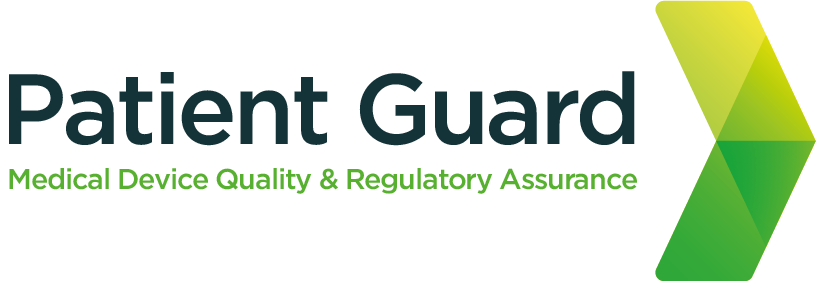Medical Device Post Market Surveillance (PMS)
Post-market surveillance (PMS) is a pivotal aspect that governs the continued monitoring and assessment of medical devices after they have entered the market. Across the EU, UK, and USA, distinct regulatory frameworks shape PMS protocols, fostering safety, and innovation simultaneously.


Understanding Post-Market Surveillance
EU Regulations (MDR)
The European Union Medical Device Regulation (MDR) implemented in 2017, introduced robust PMS requirements. Manufacturers must establish and maintain a proactive PMS system, encompassing continuous monitoring, trend analysis, and risk assessment.
UK Regulations (UK MDR)
Post-Brexit, the UK retains stringent regulations akin to the EU MDR under the UK Medical Device Regulation (UK MDR). Embracing a similar stance, manufacturers must adhere to comprehensive PMS strategies, ensuring patient safety and product effectiveness. Compliance with UK MDR aligns with the government’s commitment to upholding high standards in healthcare.


US Regulations (FDA)
The United States Food and Drug Administration (FDA) oversees medical device regulations, emphasizing a risk-based approach to PMS. Manufacturers must report adverse events, continuously evaluate devices’ performance, and implement corrective actions as necessary. The Unique Device Identification (UDI) system in the US promotes traceability and facilitates efficient monitoring.

What does PMS entail?
Risk Management
Risk management and Post Market Surveillance (PMS) are interrelated processes that work in tandem to ensure the ongoing safety and effectiveness of medical devices once they are on the market. Risk management within the context of PMS involves identifying, assessing, mitigating, and continuously monitoring potential risks associated with medical devices in real-world settings.
Integration of Risk Management with Post-Market Surveillance:
1. Risk Identification
- PMS activities contribute to the identification of potential risks by collecting and analyzing real-world data, including adverse events, complaints, and clinical feedback.
- Reported incidents during PMS can highlight previously unidentified risks or patterns that were not evident during pre-market evaluations.


2. Risk Assessment and Evaluation:
- Data collected during PMS is used for ongoing risk assessments, evaluating the severity, frequency, and potential impact of identified risks on patient safety and device performance.
- The risk assessment process within PMS helps prioritize and categorize risks, determining their significance and need for further action.
3. Risk Mitigation Strategies:
- Insights gained from PMS activities inform the implementation of risk mitigation measures and corrective actions to address identified risks.
- Manufacturers may update labeling, issue warnings, initiate recalls, modify device design, or provide additional training to healthcare professionals based on the risk assessment from PMS findings.


4. Continuous Monitoring and Improvement:
- PMS serves as a mechanism for continuous monitoring of the effectiveness of implemented risk mitigation strategies.
- Ongoing data collection and analysis in PMS allow for the evaluation of the effectiveness of risk mitigation measures and enable adjustments or enhancements as needed.
5. Regulatory Compliance and Reporting:
- Risk management activities and their outcomes derived from PMS are documented and reported to regulatory authorities as part of compliance requirements.
- PMS findings related to risk management contribute to updates in risk assessments and associated documentation for regulatory submissions.


6. Feedback Loop for Improvement:
- The information obtained from PMS feeds back into the risk management process, guiding future risk assessments, refining risk mitigation strategies, and driving improvements in device safety and performance.
The integration of risk management with PMS ensures a proactive approach to identifying and addressing potential risks associated with medical devices in real-world scenarios. By continuously evaluating and mitigating risks based on post-market data, manufacturers can enhance the safety profile of devices and prioritize patient safety throughout the device’s lifecycle.
PMS Plan
A Post-Market Surveillance (PMS) plan for medical devices is a structured strategy outlined by manufacturers to systematically monitor and assess the performance, safety, and efficacy of their devices once they are available on the market. This plan is a critical component in ensuring ongoing compliance with regulatory requirements and enhancing the device’s safety profile throughout its lifecycle.
A comprehensive PMS plan typically includes the following key elements:


1. Objective Definition and Scope
Clearly defining the objectives of post-market surveillance, outlining the scope, and identifying the specific devices and markets it applies to.
2. Risk Management and Assessment
Conducting risk assessments to identify potential hazards associated with the device’s use in real-world scenarios.
Implementing risk mitigation strategies and monitoring to minimize identified risks.


3. Data Collection and Analysis
Establishing systematic methods for collecting post-market data from various sources, such as adverse event reports, clinical studies, registries, and feedback from healthcare professionals and patients.
Analysing collected data to identify trends, patterns, and potential issues related to device performance or safety.
4. Reporting Mechanisms
Creating a structured reporting process for adverse events, complaints, and other significant findings to regulatory authorities as per their specific requirements and timelines.


5. Continuous Improvement
Implementing processes for continuous improvement based on the findings from surveillance activities, incorporating corrective and preventive actions (CAPA) where necessary.
Updating labelling, instructions for use, or design modifications based on the insights gained.
6. Compliance with Regulatory Requirements
Ensuring adherence to regulatory requirements of the respective regions where the device is marketed (such as EU MDR, UK MDR, or FDA regulations).
Incorporating UDI (Unique Device Identifier) and other traceability mechanisms as mandated by regulations.


7. Communication and Collaboration
Establishing channels for effective communication with stakeholders, including healthcare providers, patients, regulators, and internal teams, to disseminate safety-related information and gather feedback.
8. Documentation and Record-Keeping
Maintaining comprehensive documentation of PMS activities, findings, and actions taken for auditing purposes and to demonstrate compliance.


9. Training and Awareness
Providing training and raising awareness among employees involved in PMS activities to ensure they understand their roles, responsibilities, and the importance of post-market surveillance.
10. Periodic Review and Updates
Regularly reviewing and updating the PMS plan to align with evolving regulatory requirements, technological advancements, and changing market dynamics.
By systematically integrating these elements, a well-structured PMS plan enables manufacturers to proactively identify and address potential issues related to their medical devices, ensuring ongoing safety and efficacy while meeting regulatory obligations.


Vigilance
Medical device vigilance refers to the systematic process of monitoring and reporting adverse events or incidents associated with medical devices that have been placed on the market. It involves the collection, assessment, and dissemination of information related to the safety and performance of medical devices to ensure their continued safe use by patients and healthcare professionals.
Key Aspects of Medical Device Vigilance:
1. Adverse Event Reporting:
- Manufacturers, healthcare facilities, healthcare providers, and patients are encouraged to report any incidents, malfunctions, or adverse effects related to medical devices.
- These reports include details about the device, the nature of the incident, patient outcomes, and any actions taken.


2. Data Collection and Analysis:
- Collected reports are analyzed to identify potential trends, patterns, or recurring issues associated with specific devices.
- Data analysis aims to assess the severity, frequency, and root causes of adverse events to determine their impact on device safety.
3. Risk Assessment and Mitigation:
- Manufacturers perform risk assessments to evaluate the potential risks posed by reported incidents and take necessary measures to mitigate these risks.
- This may involve issuing warnings, recalls, modifications, or design changes to enhance device safety.


4. Regulatory Reporting:
- Regulatory authorities mandate the submission of vigilance reports by manufacturers to ensure compliance with safety regulations.
- These reports may be required periodically or in response to specific incidents that raise concerns about device safety.
5. Communication and Dissemination of Information:
- Ensuring effective communication among stakeholders (manufacturers, healthcare professionals, regulators, patients) to disseminate safety-related information and updates.
- Sharing best practices, warnings, and recommendations to mitigate risks associated with certain devices.


6. Continuous Improvement:
- The vigilance system facilitates ongoing monitoring and improvement of device safety based on real-world feedback and experiences.
- Lessons learned from reported incidents drive enhancements in device design, labeling, instructions for use, or manufacturing processes.
Medical device vigilance aims to create a proactive and collaborative environment where stakeholders work together to identify, assess, and address potential risks associated with medical devices. By fostering transparency and continuous monitoring, vigilance systems contribute significantly to enhancing patient safety and the overall quality of healthcare delivery.
PMS Report
For Class I medical device manufacturers, Post-Market Surveillance (PMS) reports serve as essential documents that detail the ongoing monitoring and assessment of the device’s performance, safety, and efficacy once it’s on the market. These reports are crucial in demonstrating compliance with regulatory requirements and ensuring continuous improvement in device safety and effectiveness.
Key Components of a PMS Report for Class I Medical Devices:
1. Device Information
Detailed description of the Class I medical device, including its intended use, specifications, and any modifications made since its initial market release.
2. Data Collection Methodology
Explanation of the methods used to collect post-market data, such as complaint handling, customer feedback, clinical investigations, or literature reviews.
3. Adverse Event Reporting
Summary of adverse events reported related to the device, including details on the nature of events, their frequency, severity, and any trends observed.
4. Complaint Handling
Overview of complaints received regarding the device, their categorization, investigation process, and any corrective actions taken in response.
5. Trend Analysis
Analysis of collected data to identify any emerging trends or patterns that might indicate potential issues with the device’s safety or performance.
6. Risk Assessments and Mitigation Measures
Summary of risk assessments conducted for the device and any risk mitigation strategies implemented or planned based on the findings.
7. Regulatory Compliance
Confirmation of compliance with applicable regulatory requirements for Class I devices, including adherence to labeling, quality system regulations, and other relevant standards.
8. Actions Taken
Description of any corrective actions, design modifications, labelling updates, or other measures implemented in response to identified issues or risks.
9. Post-Market Surveillance Plan Updates
Any updates or modifications made to the PMS plan based on the findings and lessons learned during the reporting period.
10. Conclusion and Recommendations
Summary of key findings, conclusions drawn from the data analysis, and recommendations for further actions or improvements.
11. Documentation and Record-Keeping
Ensuring proper documentation and record-keeping of the PMS report for audit purposes and demonstrating compliance with regulatory authorities.
Creating a structured and comprehensive PMS report for Class I medical devices allows manufacturers to systematically document their surveillance activities, findings, and actions taken to ensure ongoing compliance and device safety. It also serves as a crucial tool for continuous improvement and maintaining the device’s effectiveness in the market.
Do you need support with PMS?

Keep up to date with the latest medical device news
Post-Market Surveillance Quiz
1. What is the purpose of post-market surveillance?
B. To conduct clinical trials
C. To design new medical devices
2. Who is responsible for post-market surveillance?
B. Regulatory authorities only
C. Both the manufacturer and regulatory authorities
3. What information is typically collected during post-market surveillance?
B. Sales figures
C. Advertising campaigns
4. How often should post-market surveillance activities be conducted?
B. At least annually
C. Only if there are complaints
5. What is the primary goal of post-market surveillance?
B. To improve patient safety
C. To promote the company's brand

PSUR (Periodic Safety Update Report)
A PSUR (Periodic Safety Update Report) for medical device manufacturers of class IIa, IIb and class III devices is a comprehensive document that provides a detailed overview of the safety and performance of a medical device throughout its lifecycle. Similar to pharmaceuticals, PSURs for medical devices are intended to be submitted at regular intervals to regulatory authorities, showcasing the device’s safety profile in the post-market phase.
Key Components of a PSUR for Medical Device Manufacturers:
1. Device Information and Lifecycle Overview
- Detailed description of the medical device, its intended use, specifications, and any changes or updates made to the device during its lifecycle.
2. Adverse Event Reporting
- Compilation and analysis of adverse events reported related to the device, including information on the nature, frequency, severity, and outcomes of these events.
3. Complaint Handling and Feedback
- Summary of complaints received, investigations conducted, and actions taken in response to customer feedback, including any trends or recurring issues observed.
4. Post-Market Clinical Follow-Up (PMCF) Studies
- Details on any ongoing or completed post-market clinical studies conducted to assess the device’s safety and performance in real-world settings.
5. Risk Management Activities
- Documentation of risk assessments, mitigation measures implemented, and the effectiveness of these measures in addressing identified risks associated with the device.
6. Summary of Changes
- Overview of any changes made to the device, including modifications in design, materials, labelling, or manufacturing processes, and their impact on safety and performance.
7. Regulatory Compliance
- Confirmation of compliance with applicable regulatory requirements, standards, and any updates made to ensure alignment with changing regulations.
8. Analysis and Conclusion
- Analysis of collected data, trends, and their implications for the device’s safety and performance, along with conclusions drawn from this analysis.
9. Recommendations and Actions Taken
- Recommendations for any further actions, improvements, or modifications based on the findings of the PSUR, along with details of actions taken in response to identified issues.
10. Documentation and Record-Keeping
- Ensuring proper documentation and record-keeping of the PSUR for audit purposes and to demonstrate compliance with regulatory authorities.
The PSUR serves as a crucial tool for manufacturers to systematically evaluate and report on the safety and performance of their medical devices, demonstrating ongoing compliance with regulatory requirements. It facilitates continuous monitoring, assessment, and improvement of the device’s safety profile throughout its lifecycle.
Clinical Evaluation
Post-market surveillance (PMS) and clinical evaluation for medical devices are interconnected processes that complement each other in ensuring the ongoing safety, performance, and compliance of devices throughout their lifecycle. While clinical evaluation primarily focuses on pre-market assessments, PMS extends beyond market entry to continuously monitor devices in real-world settings. Here’s how they are linked:
1. Pre-Market Clinical Evaluation:
Clinical evaluation occurs during the pre-market phase and involves assessing the safety and performance of a device through clinical trials and studies before its market release.
Findings from pre-market clinical evaluations establish the initial safety and efficacy profile of the device, forming the basis for regulatory approvals.
2. Real-World Performance Assessment:
PMS collects data on the device’s performance in real-world settings after it’s commercially available, providing ongoing feedback on its safety and effectiveness.
PMS data supplements pre-market clinical data, offering insights into long-term performance, rare adverse events, and patient outcomes not captured in controlled pre-market studies.
3. Continuous Monitoring and Evidence Generation:
Clinical evaluations provide initial evidence, while PMS generates continuous real-world evidence, allowing manufacturers to monitor the device’s performance, identify trends, and assess any emerging issues.
4. Feedback for Improvement:
PMS findings feed into the refinement of clinical evaluation strategies. Insights gained from PMS may trigger the need for additional clinical studies, modifications to study protocols, or new endpoints to be considered in future clinical evaluations.
5. Risk Assessment and Mitigation:
Clinical evaluations contribute to identifying potential risks during the device development phase, while PMS identifies risks in real-world use.
PMS data assists in the ongoing assessment of identified risks and the implementation of risk mitigation strategies based on clinical evaluation and post-market findings.
6. Regulatory Compliance and Reporting:
Both processes are essential for meeting regulatory requirements. Clinical evaluation data is submitted for pre-market approvals, while PMS data is reported to regulatory authorities to demonstrate ongoing compliance and safety.
7. Lifecycle Management and Device Iterations:
Combined, these processes facilitate lifecycle management by supporting device iterations, updates, or modifications based on continuous feedback and evidence obtained from both clinical evaluation and PMS.
The link between PMS and clinical evaluation creates a cyclical process where insights gained from real-world use continuously inform and refine the understanding of a device’s performance, ensuring its ongoing safety and effectiveness. This iterative approach supports evidence-based decision-making, regulatory compliance, and the continual improvement of medical devices throughout their lifecycle.

How can Patient Guard help you?
Patient Guard is an experienced consultancy and can offer support around all PMS, Clinical Evaluation, Risk Management and PMCF requirements. Contact us today to discuss this with us.






